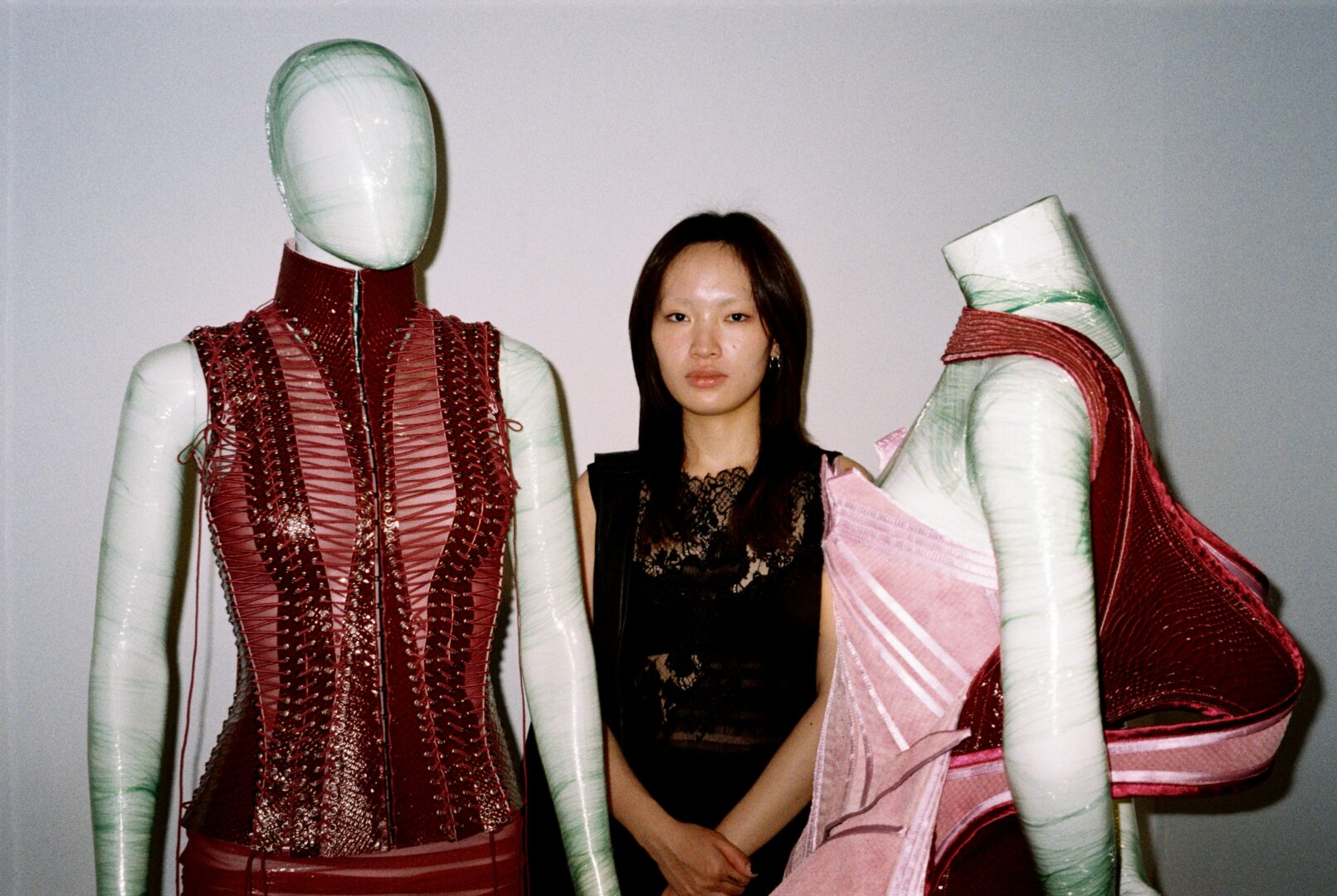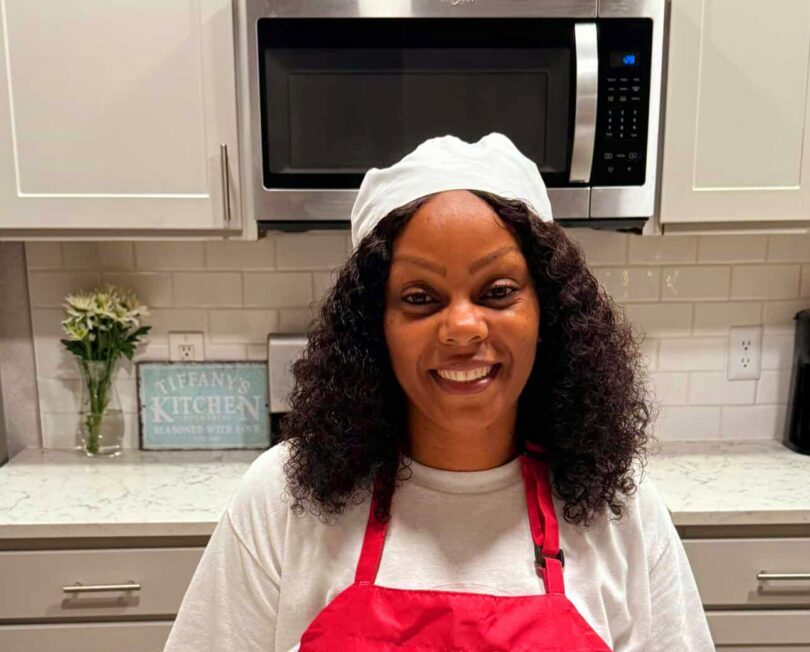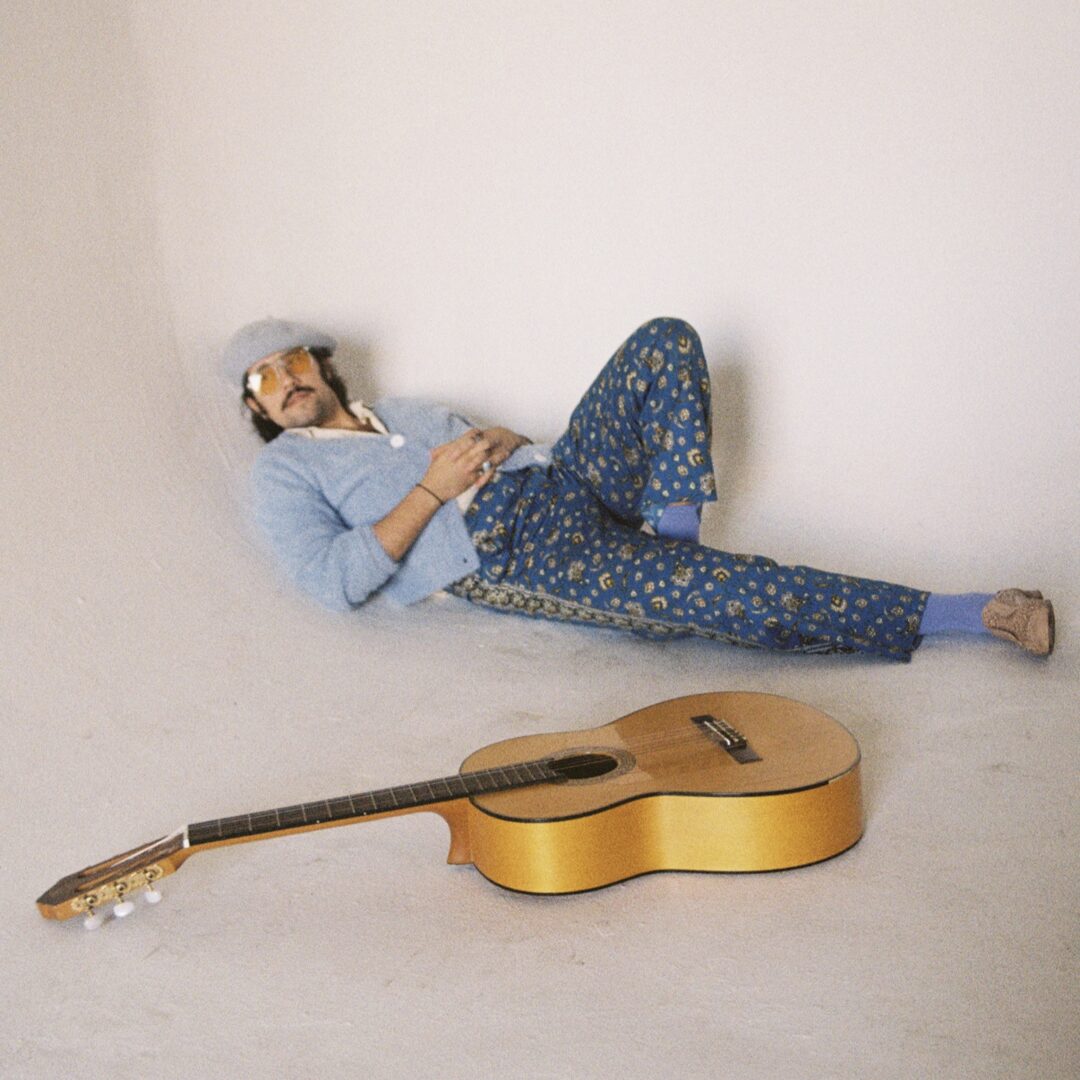Alright – so today we’ve got the honor of introducing you to Peicen Jiang. We think you’ll enjoy our conversation, we’ve shared it below.
Hi Peicen, appreciate you sitting with us today to share your wisdom with our readers. So, let’s start with resilience – where do you get your resilience from?
My resilience comes from years of navigating the demanding world of fashion, where persistence and adaptability are essential for success. As a designer, I have consistently pushed creative boundaries, whether through my exploration of the psychological impact of fashion or my dedication to sustainable couture techniques.
Throughout my career, I have faced challenges that required both problem-solving and determination. From successfully showcasing my collections internationally to securing prestigious awards like the CFDA Scholarship Fund Finalist and the Luminarts Award, I have learned that resilience is about continually evolving, refining my craft, and overcoming obstacles with a clear vision.
Whether it’s managing complex couture projects at Marchesa, creating intricate textile developments at Danielle Frankel, or ensuring that my collections maintain the highest level of craftsmanship, I have built a reputation for perseverance and excellence. Resilience, for me, is not just about enduring difficulties—it’s about transforming them into opportunities for innovation and growth. This mindset has allowed me to establish myself in the industry and will continue to drive my contributions to fashion at an international level.
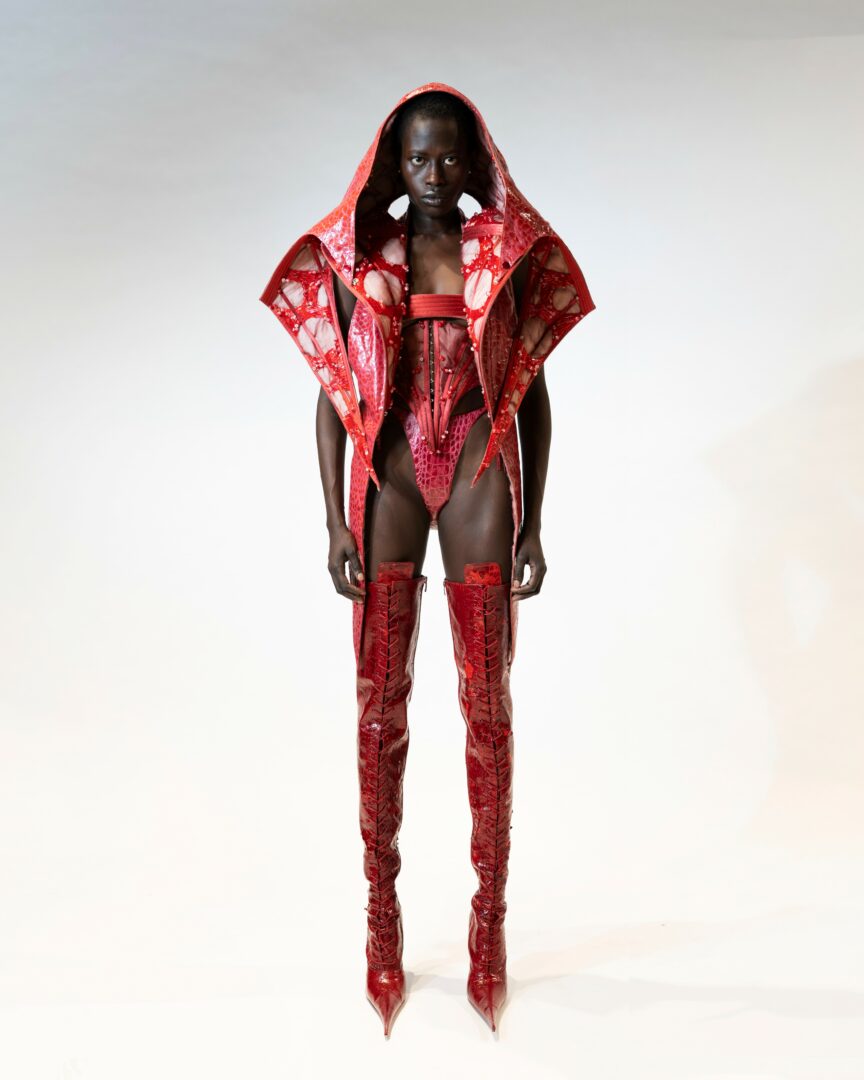
Thanks for sharing that. So, before we get any further into our conversation, can you tell our readers a bit about yourself and what you’re working on?
I am a fashion designer specializing in couture techniques and avant-garde craftsmanship, with a focus on the intersection of fashion, art, and psychological narratives. My work explores the distortion of the female form, drawing inspiration from historical corsetry, crinolines, and the surreal aesthetics of artists like H.R. Giger and Franciszek Starowieyski. Through intricate handwork—beading, embroidery, and textile manipulation—I challenge traditional silhouettes while maintaining a strong commitment to sustainability, often working with deadstock fabrics and artisanal techniques.
What excites me most about my work is the ability to tell stories through garments. Fashion, to me, is more than clothing—it’s a medium that can evoke emotions, question societal norms, and redefine beauty. Whether working on my own collections or contributing to major fashion houses like Marchesa and Thom Browne, I strive to create pieces that are both conceptually profound and technically masterful.
Currently, I am focused on expanding my presence in the industry while continuing to push the boundaries of textile innovation. I have been fortunate to receive recognition through awards such as the CFDA Scholarship Fund Finalist, the Luminarts Award, and the DNA Paris Design Award, and I aim to build on this momentum. Looking ahead, I am developing new projects that blend my passion for fashion and fine art, and I am excited about upcoming collaborations that will further explore the fusion of historical craftsmanship with contemporary design.
For those who follow my work, I want them to see fashion not just as something to wear, but as an experience—one that can be provocative, transformative, and deeply personal.
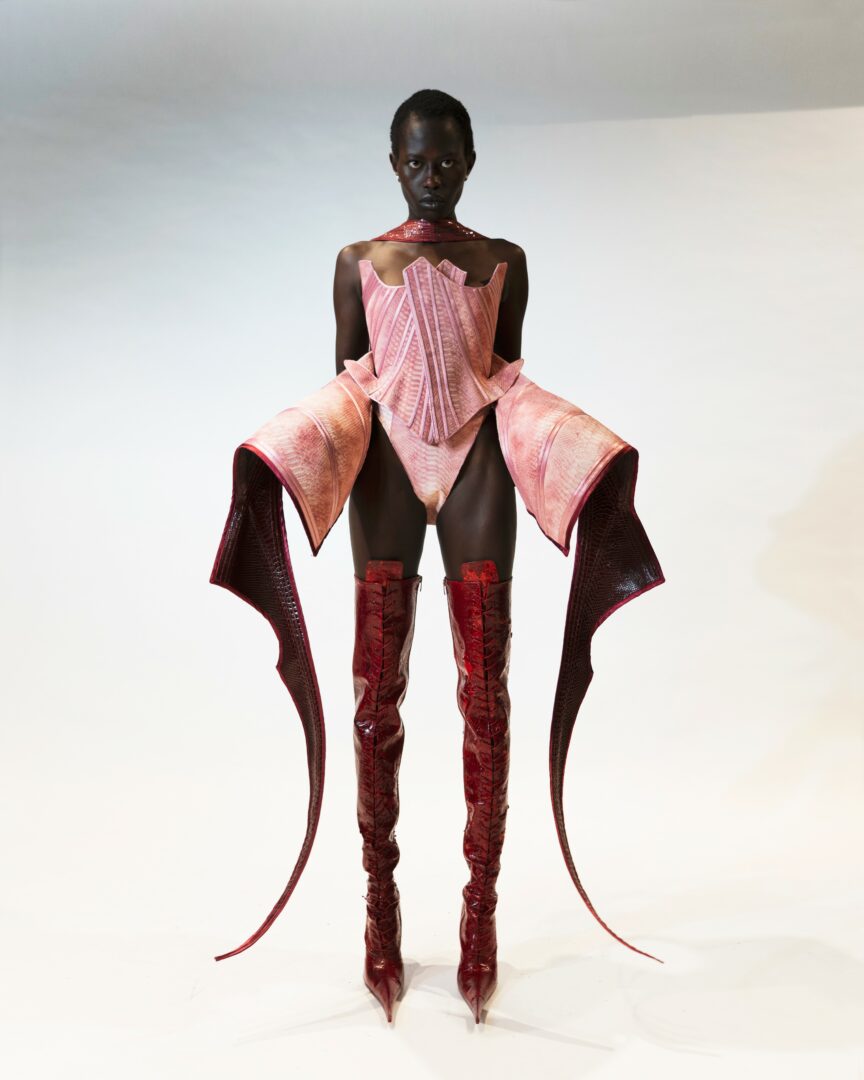
Looking back, what do you think were the three qualities, skills, or areas of knowledge that were most impactful in your journey? What advice do you have for folks who are early in their journey in terms of how they can best develop or improve on these?
Looking back, the three most impactful qualities in my journey have been resilience, technical craftsmanship, and storytelling through design.
Resilience – The fashion industry is demanding, and success often comes to those who are relentless in their pursuit. Rejections, setbacks, and challenges are inevitable, whether it’s a missed opportunity or an unexpected complication in production. What has helped me push forward is my ability to adapt and problem-solve. For those starting out, my advice is to embrace challenges as part of the process and never let temporary obstacles define your long-term vision. Seek mentorship, build a support system, and always remind yourself why you started.
Technical Craftsmanship – Having a strong foundation in couture techniques, patternmaking, embroidery, and textile manipulation has been essential to me. While creativity is crucial, being able to translate ideas into reality at the highest level of execution is what sets great designers apart. I encourage emerging designers to invest in their technical skills—learn from experts, practice obsessively, and never stop refining your craft.
Storytelling Through Design – What makes a designer truly memorable is the ability to communicate a unique perspective through their work. My collections are deeply rooted in narrative, whether exploring societal pressures on the female form or reinterpreting historical silhouettes with a modern lens. My advice for new designers is to find their own voice, dig deeper into your inspirations, experiment with how fashion can be a medium for storytelling, and create pieces that resonate on an emotional level.
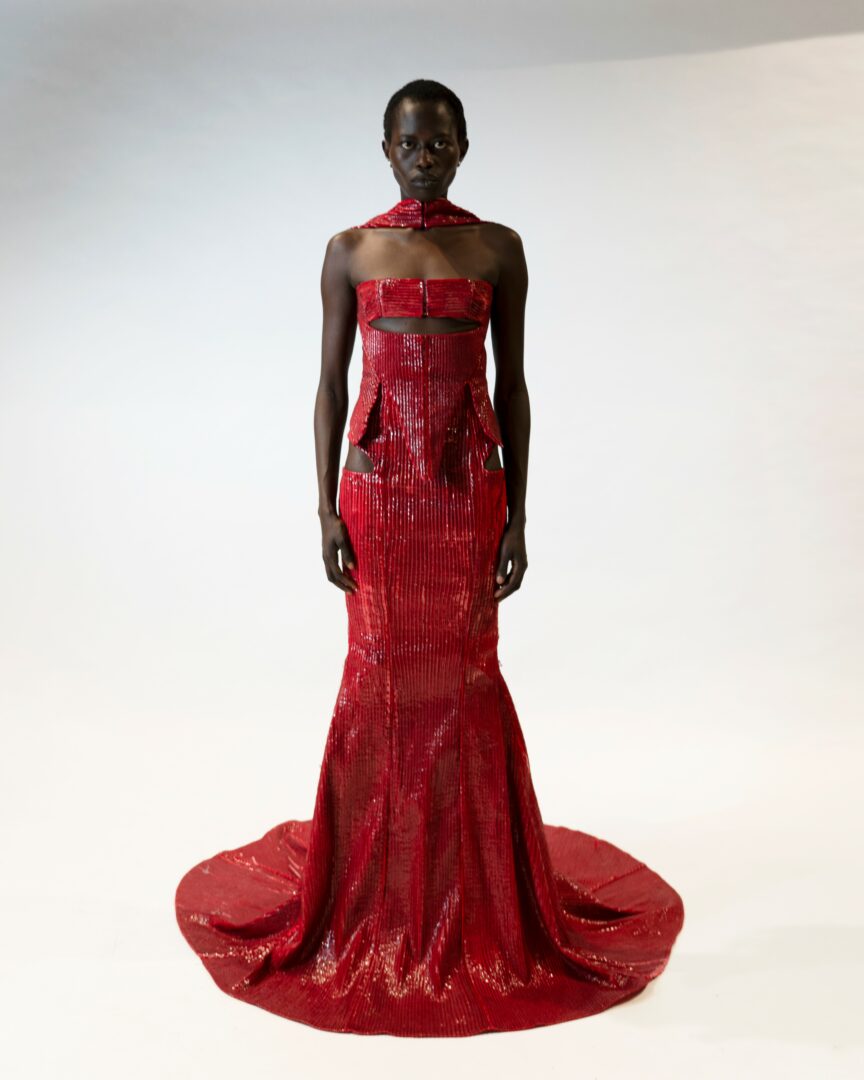
Who has been most helpful in helping you overcome challenges or build and develop the essential skills, qualities or knowledge you needed to be successful?
I’ve been fortunate to have incredible mentors and supporters who have played a crucial role in my journey. One of the most influential figures has been Nick Cave, whose guidance has shaped not only my artistic vision but also my approach to resilience and creative exploration. His encouragement has reinforced the importance of pushing boundaries, staying true to my perspective, and viewing fashion as more than just clothing—it’s a form of storytelling and cultural commentary.
Beyond mentorship, my professors at SAIC, including Liat Smestad and Anke Loh, have been instrumental in refining my technical skills, from couture craftsmanship to experimental textile development. Their expertise helped me bridge the gap between conceptual artistry and high-level execution, giving me the foundation to excel in both independent design and industry roles.
I also owe a lot to the hands-on experience I’ve gained through working with couture ateliers. These experiences taught me the discipline, precision, and attention to detail that define true craftsmanship.
That said, while mentorship and professional experiences have been invaluable, I believe self-discipline and persistence have been just as critical. No matter how much guidance you receive, success ultimately comes down to how much effort you put in—constantly refining your skills, staying adaptable, and pushing forward even when things don’t go as planned
Contact Info:
- Website: https://peicenjiang.cargo.site
- Instagram: @6jiang6
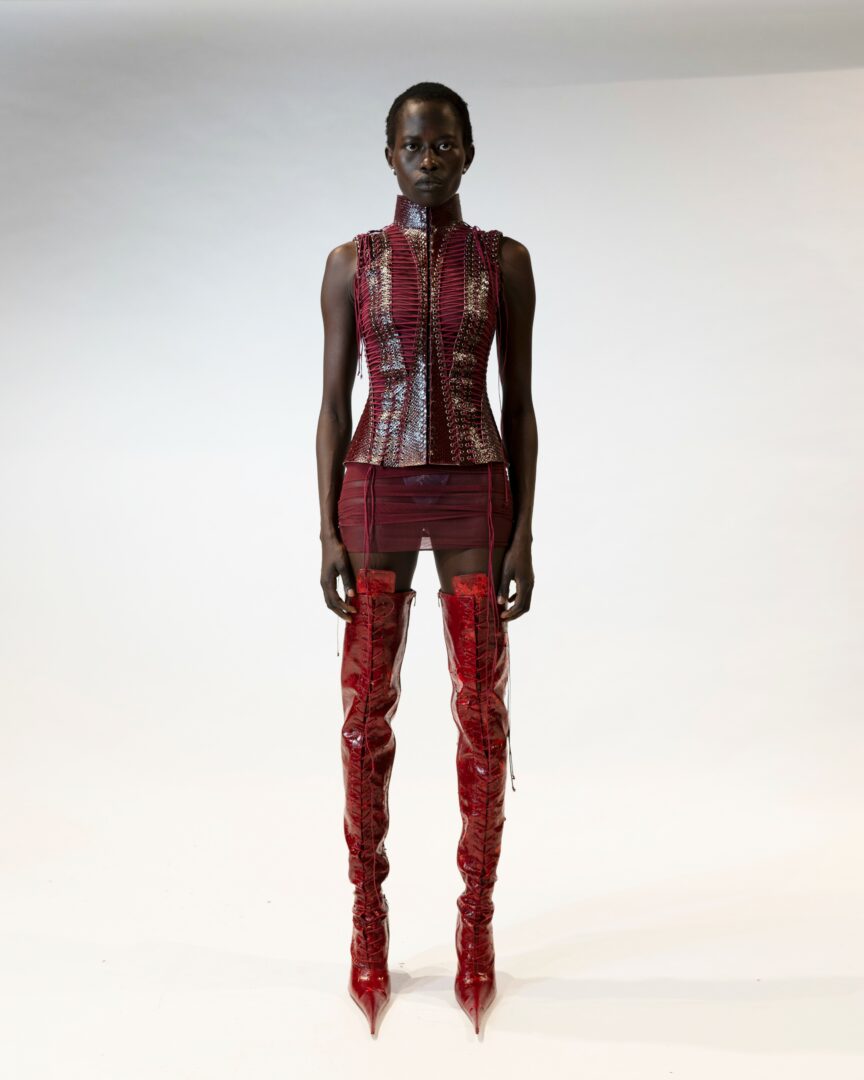
Image Credits
Model @always_athok
Photography @onemorecig_
Stylist @jmknz_
so if you or someone you know deserves recognition please let us know here.

